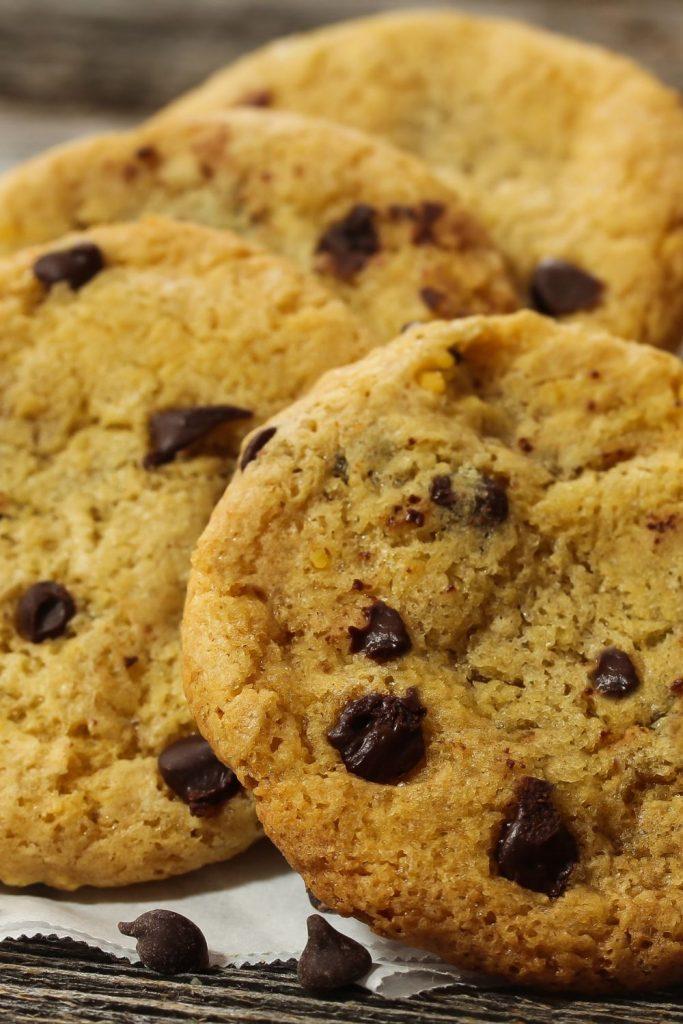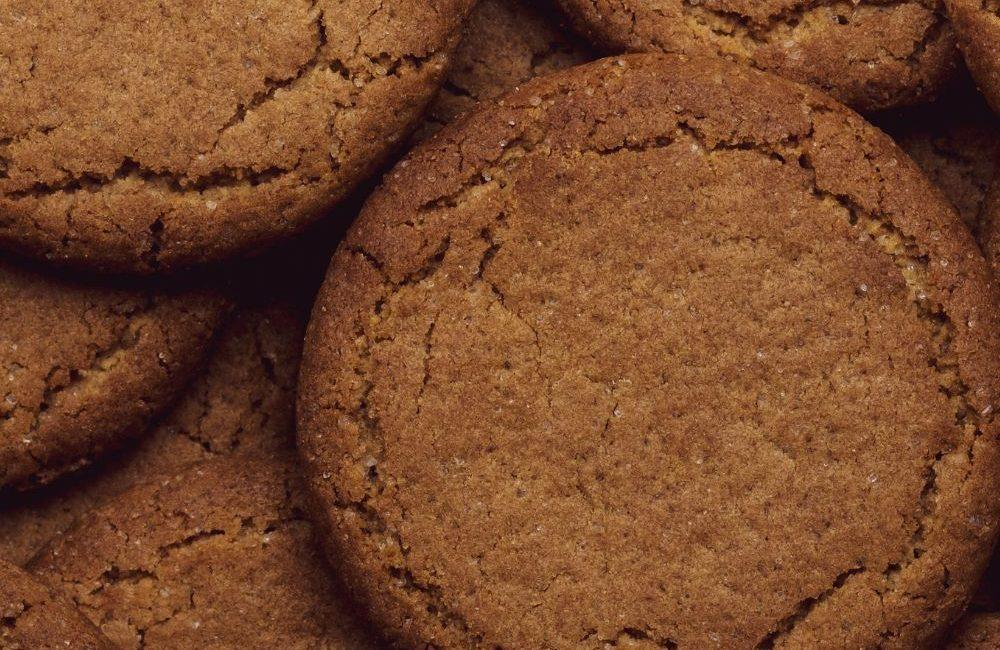Welcome to our blog post where we’re about to dive into the delightful world of homemade nut-free cookies. If you’ve ever wondered how much it costs to whip up a batch of these sweet treats in the comfort of your own kitchen, you’re in the right place.
We’ll break down the expenses, from ingredients to optional add-ins, and even consider factors like energy usage and packaging.
So, grab your apron, and let’s explore the cost of making nut-free cookies at home. It’s a delicious journey you won’t want to miss.
Baking Bliss on a Budget: The Price of Nut-Free Cookies at Home.
The cost of making nut-free cookies at home can vary depending on various factors, including the type of cookies you want to bake, the quality of ingredients you choose, and where you live. I’ll break down the cost into several categories to give you a better idea of what to expect:
- Ingredients:
- Flour: The cost of flour can vary, but on average, a bag of all-purpose flour (about 5 pounds) costs around $3 to $5.
- Sugar: A 4-pound bag of granulated sugar typically costs around $2 to $4.
- Butter: The price of butter can vary based on brand and location, but a pound of butter generally ranges from $3 to $6.
- Eggs: A dozen eggs usually cost between $1.50 to $4, depending on the type and size.
- Baking Powder/Soda: These are relatively inexpensive, with a small container costing around $1 to $2.
- Vanilla Extract: A small bottle of vanilla extract can cost anywhere from $2 to $5.
- Optional Mix-Ins (chocolate chips, raisins, etc.): Prices vary, but a bag of chocolate chips might cost around $2 to $4.
- Optional Additions:
- If you decide to add any special ingredients like chocolate chips, dried fruits, or nuts (other than peanuts), you’ll need to factor in the cost of these items. The cost depends on the quantity and type of add-ins you choose.
- Kitchen Equipment:
- You’ll need basic kitchen equipment like mixing bowls, measuring cups and spoons, baking sheets, and an oven. These are typically considered one-time expenses and not part of the cost of each batch of cookies.
- Utilities:
- Baking cookies requires using your oven, which will contribute to your electricity or gas bill. The cost will depend on your energy rates and the efficiency of your oven.
- Packaging:
- If you plan to gift or store your cookies, consider the cost of packaging materials such as cookie tins or bags.
- Labor:
- This isn’t a direct cost, but it’s worth considering your time and effort spent baking.
To estimate the cost of making nut-free cookies, you’ll need to add up the costs of the specific ingredients you use for your chosen recipe.
Keep in mind that homemade cookies are often more cost-effective than store-bought ones, and you have the advantage of controlling the quality and quantity of ingredients.
For a basic batch of homemade nut-free cookies, using common pantry staples, you might spend around $5 to $10. However, this cost can vary significantly based on your location, the brand of ingredients you choose, and the specific recipe you follow. More elaborate recipes with specialty ingredients can result in higher costs.
Nut-Free Cookie Cost Calculator
Total Cost: $0.00

Let’s dig down.
Let me dive deeper into each of the ingredients, optional additions, and kitchen equipment you might need to make nut-free cookies at home:
Ingredients:
Flour:
Flour is a fundamental ingredient in most cookie recipes. All-purpose flour is versatile and can be used for a wide range of baked goods. The cost of a 5-pound bag can vary based on the brand and location, with generic brands often being more affordable.
Sugar:
Granulated sugar provides sweetness to your cookies. A 4-pound bag is a common size and is usually quite affordable. You can also consider alternative sweeteners like brown sugar or powdered sugar for different cookie textures and flavors.
Butter:
Butter adds richness and flavor to cookies. The price of butter can fluctuate depending on the brand and location. You might choose unsalted butter for baking so you can control the salt content in your recipe.
Eggs:
Eggs provide structure and moisture to your cookies. The cost of eggs can vary depending on factors like the type (organic, free-range, etc.) and size (large, extra-large) you prefer. Eggs are usually sold by the dozen.
Baking Powder/Soda:
Baking powder and baking soda are leavening agents that help cookies rise and become tender. These are relatively inexpensive and are often sold in small containers that last a long time.
Vanilla Extract:
Vanilla extract adds a pleasant aroma and flavor to your cookies. The price of vanilla extract can vary depending on its quality and whether it’s pure or imitation. Pure vanilla extract tends to be more expensive but provides superior flavor.
Optional Mix-Ins:
Optional mix-ins like chocolate chips, raisins, or dried fruits can enhance the texture and taste of your cookies. The cost of these items will vary depending on the brand and quantity you choose.
Optional Additions:
If you decide to include special ingredients such as premium chocolate chips, artisanal dried fruits, or gourmet extracts, these can significantly impact the overall cost of your cookies. Consider your budget and personal preferences when selecting optional additions.
Kitchen Equipment:
Mixing Bowls:
You’ll need mixing bowls of various sizes to combine your ingredients. Stainless steel or glass bowls are common choices.
Measuring Cups and Spoons:
Accurate measurements are crucial in baking. You’ll need measuring cups for dry ingredients and measuring spoons for smaller quantities of ingredients like spices.
Baking Sheets:
Baking sheets or cookie sheets are used to bake your cookies. Non-stick sheets are convenient, but regular sheets can work with parchment paper.
Oven:
An oven is essential for baking cookies. The cost of using your oven will vary based on your energy rates and the time it takes to bake your cookies.
Optional Equipment:
While not mandatory, other equipment like a stand mixer, electric hand mixer, or silicone baking mats can make the baking process more efficient and enjoyable. These are considered long-term investments.
let’s delve deeper into the considerations of utilities, packaging, and labor when making nut-free cookies at home:
Utilities:
Energy Costs:
Baking cookies requires the use of your oven, which consumes electricity or gas. The cost will depend on several factors:

Energy Rates:
The cost per kilowatt-hour (for electricity) or per cubic foot (for natural gas) varies by location and energy provider. You can find this information on your utility bill.
Oven Efficiency:
The efficiency of your oven can impact energy consumption. Older ovens may be less efficient than newer models. Convection ovens, for example, are typically more energy-efficient because they circulate hot air more evenly.
To estimate the energy cost, you can check the wattage rating of your oven and multiply it by the time it takes to bake the cookies.
Divide this by 1,000 to convert to kilowatt-hours (kWh) for electricity or follow a similar process for gas. Multiply by your energy rate to get the cost.
Packaging:
Packaging Materials:
If you plan to gift or store your cookies, you’ll need packaging materials. These can include:
Cookie Tins:
These come in various sizes and designs. The cost will depend on the size and quality of the tin.
Plastic Bags:
Clear plastic bags with decorative ties or labels are an economical choice.
Cookie Boxes:
Sturdy cardboard cookie boxes can be used for gifting. Prices vary based on size and design.
Decorative Ribbons or Labels:
If you want to add a decorative touch, factor in the cost of ribbons, labels, or stickers for sealing packages.
The cost of packaging materials will depend on your preferences and the quantity of cookies you plan to package. It’s a one-time expense that you can reuse for future baking.
Labor:
Time and Effort:
While not a direct monetary cost, it’s essential to consider the time and effort you invest in making cookies.
Baking can be a relaxing and enjoyable activity, but it does require your attention and time.
Factors to consider include:
Preparation Time:
Time spent measuring and mixing ingredients.
Baking Time:
The duration your cookies need to be in the oven.
Cleanup:
Washing dishes, utensils, and cleaning up your kitchen.
Decorating or Packaging:
If you plan to decorate or package your cookies nicely, this will also require additional time.
Your time is valuable, so it’s essential to find a balance between enjoying the baking process and the convenience of buying pre-made cookies.
Overall, while there are costs associated with utilities, packaging materials, and the time you invest, homemade cookies often offer the advantage of customization and quality control.
You can adjust these factors to align with your preferences and budget, making the experience of baking and sharing nut-free cookies a rewarding one.
A complete tabular on this topic here.
Here’s a complete tabular breakdown of the cost to make nut-free cookies at home, considering various ingredients, optional additions, kitchen equipment, utilities, packaging materials, and labor:
| Category | Cost Range | Details |
|---|---|---|
| Ingredients | ||
| Flour | $3 to $5 (5 lbs) | Common all-purpose flour. |
| Sugar | $2 to $4 (4 lbs) | Granulated sugar. |
| Butter | $3 to $6 (1 lb) | Unsalted butter. |
| Eggs | $1.50 to $4 (dozen) | Large eggs. |
| Baking Powder/Soda | $1 to $2 | Small containers. |
| Vanilla Extract | $2 to $5 | Small bottle, pure or imitation. |
| Optional Mix-Ins | $2 to $4 (per bag) | Chocolate chips, raisins, etc. |
| Optional Additions | Variable | Premium chocolate, artisanal dried fruits, etc. |
| Kitchen Equipment | One-time expense | Mixing bowls, measuring cups, baking sheets, oven, etc. |
| Utilities | Varies based on usage | Energy rates, oven efficiency, baking time, and type. |
| Packaging | Variable | Cookie tins, plastic bags, cardboard boxes, ribbons, etc. |
| Labor | Time and effort | Preparation, baking, cleanup, decorating, and packaging. |
Please note that the cost of optional additions and packaging materials can vary significantly depending on your preferences and the quantity of cookies you plan to make. The “Utilities” cost depends on your energy rates and the efficiency of your oven, which can vary by location and equipment.
Keep in mind that this table provides a general overview, and actual costs may differ based on your specific choices and circumstances. Homemade cookies offer flexibility in ingredient quality and quantity, allowing you to tailor them to your budget and taste preferences.
Final words
In conclusion, the cost of making nut-free cookies at home varies depending on factors such as ingredient quality, optional additions, and packaging choices.
On average, basic homemade nut-free cookies can cost between $5 to $15 per batch, considering ingredients and optional mix-ins.
However, this cost can be adjusted to align with your budget and preferences. Additional factors to consider include one-time expenses for kitchen equipment, utility costs for baking, and the value of your time and effort.
Homemade cookies offer customization and quality control, making them a flexible and rewarding treat to prepare at home.

Whether you’re a passionate baker or simply seeking sweet inspiration, I’m here to provide you with valuable insights, mouthwatering recipes, expert tips, and more to make your cookie adventures with Mike truly delightful and scrumptious. You are on the true exciting cookie-filled side.




